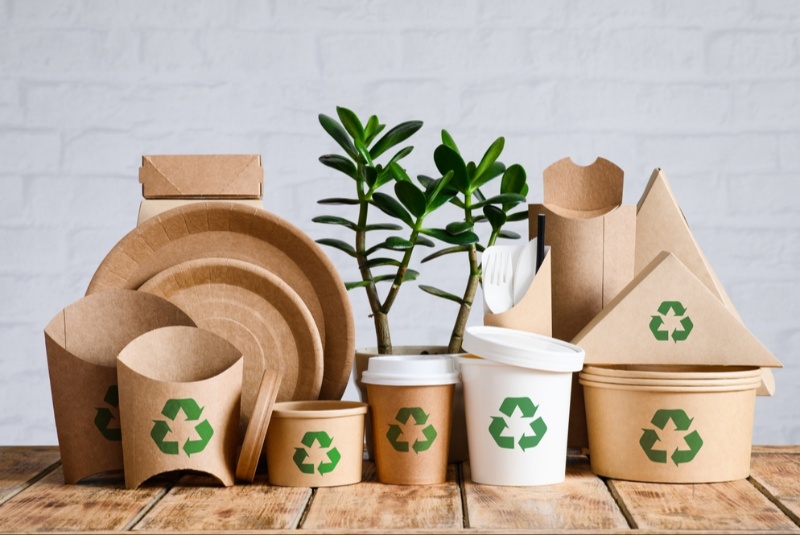As the world becomes increasingly conscious of environmental issues, the demand for eco-friendly alternatives in daily life, including food storage, has surged. Eco-friendly food containers aim to reduce the environmental impact of traditional packaging materials, but like any solution, they come with their own set of advantages and disadvantages. This comprehensive guide explores the pros and cons of eco-friendly food containers, providing insights into their environmental benefits, health considerations, cost efficiency, durability, and the challenges associated with market availability. By understanding these factors, consumers can make informed choices that align with their values and contribute to a more sustainable future.
1. Environmental Advantages: Reducing Plastic Pollution and Fostering Recycling
Reducing Plastic Pollution
One of the primary advantages of eco-friendly food containers is their significant contribution to reducing plastic pollution. Traditional plastic packaging, especially single-use items, contributes to the ever-growing environmental crisis. Eco-friendly containers, often made from materials like biodegradable plastics, plant-based fibers, or stainless steel, offer a sustainable alternative that minimizes the reliance on conventional plastics. Choosing these containers helps mitigate the environmental impact, as they are designed to break down naturally, reducing the burden on landfills and oceans.
Fostering Recycling and Reusability
Eco-friendly food containers often promote a culture of recycling and reusability. Unlike single-use plastics that contribute to a linear economy, many sustainable containers are designed for multiple uses. This encourages consumers to adopt a circular economy approach, where containers can be recycled efficiently. The ability to reuse containers reduces the overall demand for new raw materials, contributing to a more sustainable and resource-efficient food packaging system.
2. Biodegradability: A Natural End to Life
Biodegradable Materials
Opting for eco-friendly containers introduces the advantage of utilizing biodegradable materials. Unlike traditional plastics that can persist in the environment for centuries, many eco-friendly options are made from materials that naturally break down over time. This biodegradability ensures that, when disposed of correctly, these containers return to the earth without causing long-term harm. Compostable plastics, for example, break down into natural components, enriching the soil rather than contributing to persistent pollution.
Composting Capabilities
Certain eco-friendly materials, such as compostable plastics and plant-based fibers, offer composting capabilities. Composting is a sustainable waste management practice that not only minimizes waste but also converts organic matter into nutrient-rich compost. Containers suitable for composting contribute to the circular flow of nutrients in ecosystems, offering a more environmentally friendly end-of-life option compared to traditional plastic containers.

3. Health Considerations: Minimizing Chemical Exposure and Opting for Food-Grade Options
Reducing Chemical Exposure
Eco-friendly food containers often prioritize materials that minimize chemical exposure. Conventional plastic containers may contain harmful substances like Bisphenol A (BPA), which can leach into food and beverages, posing potential health risks. Choosing eco-friendly alternatives, such as stainless steel, glass, or specific food-grade plastics, can help reduce the risk of chemical exposure. This not only safeguards the health of consumers but also minimizes the release of harmful substances into the environment.
Food-Grade Options
Opting for food-grade eco-friendly materials ensures the safety of stored food. Containers made from materials like stainless steel and glass are inherently food-grade, providing a secure option for storing meals without compromising health. These materials are known for their inert properties, meaning they do not leach harmful chemicals into food, ensuring that the integrity and safety of the food are maintained.
4. Cost Efficiency: Balancing Initial Investment and Evaluating Long-Term Savings
Initial Cost Considerations
While some eco-friendly options may have a higher initial cost than traditional plastic containers, they offer long-term cost efficiency. The initial investment in sustainable containers may seem higher, but their potential for reuse and durability can offset this cost over time. Considering the long-term benefits and reduced need for continuous purchases of disposable alternatives, investing in quality eco-friendly containers may lead to significant savings.
Evaluating Long-Term Savings
Reusable eco-friendly containers eliminate the need for continuous purchases of disposable options, contributing to long-term savings. By investing in durable containers, consumers can significantly reduce overall expenses related to food packaging. Shifting the perspective from immediate costs to long-term savings makes eco-friendly options more financially viable than initially perceived, especially when considering their positive environmental impact.
5. Limited Durability: Potential Drawback and Material-Specific Challenges
Practicality Concerns
Acknowledging potential durability limitations is crucial when considering eco-friendly containers. While materials like stainless steel and glass offer robust durability, certain eco-friendly options may be less sturdy than conventional plastics. It's essential for consumers to balance environmental considerations with practicality, especially if frequent replacements are necessary.
Material-Specific Challenges
Understanding material-specific challenges is key to making informed choices. Some eco-friendly materials may be prone to damage or wear and tear under specific conditions. Assessing the intended use of the containers and choosing materials that align with the demands of your lifestyle ensures that you select containers with an appropriate level of durability. Being aware of material-specific challenges helps users make choices that meet both environmental and practical requirements.
6. Limited Availability and Variety: A Drawback to Consider
Market Availability
Recognizing potential limitations in market availability is crucial for consumers seeking a wide variety of eco-friendly containers. Depending on the location, finding an extensive range of sustainable options may be challenging. However, the growing demand for environmentally friendly products is gradually expanding the choices available in many regions, making it easier for consumers to find suitable alternatives.
Material Constraints
Acknowledging material constraints is another aspect of the limited availability and variety drawback. Some eco-friendly materials may have limitations in terms of size, shape, or design, restricting the diversity of available containers. Consumers should consider their specific needs and preferences and evaluate whether the eco-friendly options align with those requirements.
7. Washing and Care Requirements: Practical Considerations
Special Washing Instructions
Being prepared for special washing requirements is essential for maintaining the integrity of eco-friendly containers. Some materials may require specific care instructions to ensure their longevity and optimal performance. Familiarizing yourself with these instructions allows you to integrate eco-friendly containers seamlessly into your lifestyle while optimizing their environmental benefits.
Compatibility with Dishwashers
Checking compatibility with dishwashers is a practical consideration for users who value convenience. While some eco-friendly containers are dishwasher-safe, others may require handwashing. Assessing your convenience preferences and choosing containers that align with your lifestyle ensures that you can easily incorporate sustainable practices into your daily routine.




